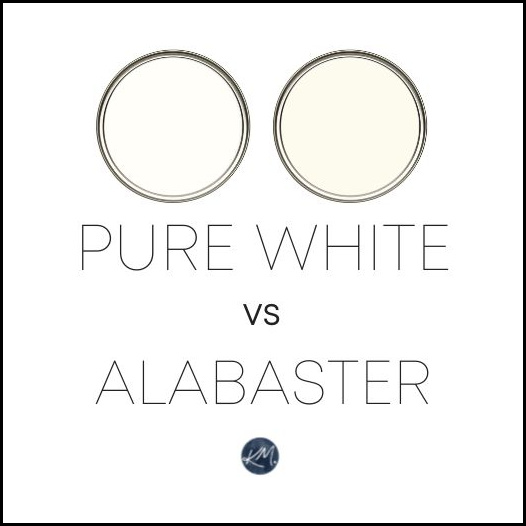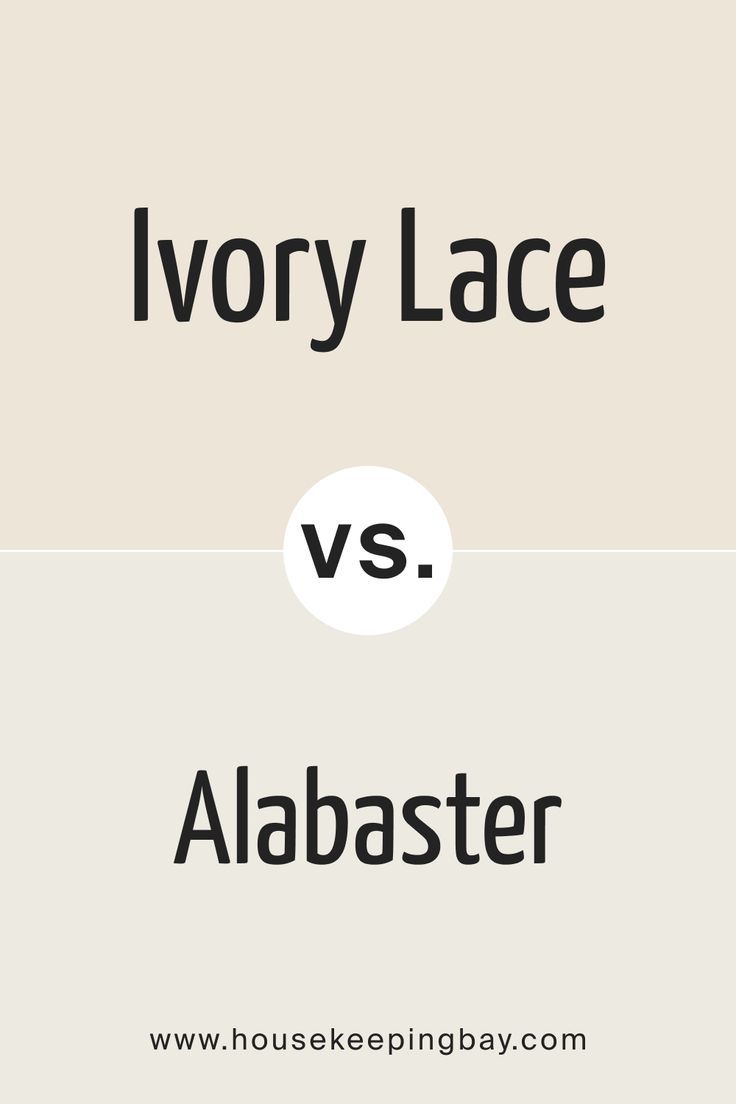Have you ever stood in front of a display of stunning sculptures or elegant home décor and wondered about the subtle difference between ivory and white alabaster? You’re not alone.
These two materials, often used in art and design, can appear surprisingly similar at first glance. Yet, understanding the unique qualities of each can open up a world of appreciation and even influence your decisions when selecting pieces for your collection or home.
Imagine the feeling of confidence you’ll gain by distinguishing these two elegant materials. You’ll not only enhance your knowledge but also heighten your ability to make informed choices. Whether you’re a collector, decorator, or simply curious, grasping the nuances between ivory and white alabaster can enrich your experience and transform the way you perceive and choose beautiful objects. Dive into the details and discover how these differences can impact your appreciation and selection of art and décor.
Ivory: Characteristics And Origins
Ivory has captivated people for centuries. Its unique beauty and warm hue make it special. Ivory is distinct in its characteristics and origins. Understanding these can help appreciate its value.
Sources And Extraction
Ivory comes from tusks of animals like elephants and walruses. These animals have long been hunted for their tusks. Extraction involves careful removal to preserve the material. This process can be controversial due to wildlife conservation concerns.
Historical Significance
Ivory has a rich history in art and culture. Ancient civilizations used it for carvings and sculptures. It symbolized wealth and status. Throughout history, it adorned religious artifacts and royal items. Its historical significance is undeniable.
Properties And Uses
Ivory is smooth and creamy white. It is dense and easy to carve. These properties make it ideal for intricate designs. Artists and craftsmen favor ivory for detailed work. Its uses range from jewelry to decorative items. Despite its beauty, ethical concerns affect its demand.

White Alabaster: Characteristics And Origins
White alabaster is known for its pure, radiant appearance. It stands out with its milky white color and smooth texture. This mineral is often used in sculptures and decorative pieces. Its origins trace back to ancient civilizations. They prized it for its beauty and versatility.
Sources And Extraction
White alabaster is extracted from specific geographical regions. Italy, Egypt, and the United States are notable sources. In these areas, alabaster can be found near limestone deposits. Extraction involves careful mining techniques to preserve its quality. The mineral is soft, allowing for easy carving.
Cultural Importance
White alabaster holds significant cultural value. Ancient Egyptians used it in tombs and temples. Its purity symbolized divine qualities. In medieval Europe, it adorned cathedrals and churches. Artists favored it for religious sculptures. Its timeless appeal continues to inspire modern creations.
Properties And Uses
White alabaster is soft, making it ideal for detailed carvings. It has a fine grain, which enhances its smooth finish. This stone is used in art, architecture, and jewelry. Sculptors appreciate its ease of shaping. Its translucence allows light to pass through, creating a glowing effect.
Visual Distinctions
Understanding the visual differences between ivory and white alabaster helps. These materials bring unique aesthetics to various art and decor projects. Both possess distinct characteristics that set them apart. These differences can influence your choice based on style and preference.
Color Variations
Ivory often has a warm, creamy hue. It may show subtle yellow or beige undertones. This gives it a softer appearance. White alabaster, on the other hand, appears purer and brighter. It usually lacks the warmth found in ivory. Instead, it offers a clean, stark white look. This difference in color can be striking and noticeable. It can also impact how each material fits into a design scheme.
Texture And Finish
Ivory typically features a smooth, almost silky texture. It often feels softer to the touch. This texture can enhance its elegant appeal. White alabaster, however, has a more matte finish. Its texture might feel slightly rougher. This gives it a more rustic or natural look. Each material’s finish contributes to its overall aesthetic. It also affects how light interacts with the surface.
Applications In Art And Design
Understanding the applications of ivory and white alabaster is crucial for artists. These materials hold significant importance in art and design. They offer unique qualities that enhance creative projects. Each has distinct uses, contributing to varied artistic expressions. Exploring how these materials are used reveals their impact on artistry.
Sculpture And Carvings
Ivory is prized for its smooth texture. It allows intricate carvings and fine details. Artists sculpt it into lifelike figures. Its natural luster adds depth to sculptures. White alabaster, in contrast, offers a softer surface. Sculptors use it for larger pieces. Its translucence creates captivating effects. Both materials enrich artistic creations.
Architectural Uses
Ivory is less common in architecture. Its rarity limits extensive applications. Yet, it adorns decorative elements. Its elegance enhances interior details. White alabaster finds broader architectural use. It is popular in column designs. Architects appreciate its durability. It provides a timeless aesthetic. These materials shape architectural beauty.
Cultural And Symbolic Meanings
Understanding the cultural and symbolic meanings of ivory and white alabaster can enrich your appreciation of these materials. They are not just colors or materials; they embody profound significance across different cultures and eras. The meanings they hold can influence how you perceive or utilize them in your own life.
Symbolism In Different Cultures
Ivory has long been associated with purity and elegance, often used in ceremonial objects and decorations in various cultures. In ancient Egypt, ivory was seen as a symbol of power and prestige, often reserved for the elite.
White alabaster, on the other hand, is celebrated for its translucent beauty and was used by Egyptians to craft sacred objects and art pieces. It was believed to hold protective qualities, often carved into amulets and talismans.
What meanings do you see reflected in your own culture? Do these materials carry significance in your traditions or beliefs?
Modern Interpretations
Today, ivory and white alabaster find new meanings in modern design and art. Ivory is often chosen for its classic elegance in home decor, signifying sophistication and timelessness.
White alabaster, with its soft glow, is favored in contemporary settings for its ability to create serene atmospheres. Its use in modern sculptures and lighting fixtures showcases its versatility and modern appeal.
How can you incorporate these materials into your space? Do they resonate with the ambiance you wish to create?
Exploring these questions can help you find deeper connections with your choices, making them more meaningful and personal.

Care And Preservation
Preserving the beauty of ivory and white alabaster requires mindful care. Both materials are exquisite, yet their delicate nature demands attention. How you clean and protect them can greatly impact their longevity and allure.
Cleaning Techniques
When cleaning ivory, gentle is the key word. Use a soft cloth slightly dampened with water to wipe away dust and dirt. A mild soap can be used sparingly for stubborn spots. Avoid soaking or using harsh chemicals, as they can damage the surface.
White alabaster, on the other hand, needs a different approach. Dust it regularly with a soft brush to prevent build-up. For deeper cleaning, use a damp cloth with distilled water. Make sure to dry it thoroughly to avoid water marks.
Preventing Damage
Preventing damage to ivory starts with avoiding direct sunlight. UV rays can cause yellowing and deterioration over time. If you have ivory pieces displayed, consider using UV-filtering glass.
White alabaster is prone to scratches and chips. Handle it with care, especially when moving or cleaning. Placing felt pads under alabaster items can prevent scratches on surfaces.
Think about the environment in which you place these pieces. High humidity can affect both ivory and alabaster. Consider the use of a dehumidifier in damp rooms to maintain an ideal environment.
Have you ever considered the importance of location? A safe spot away from pets and children can prevent accidental damage. With these simple measures, you can keep your ivory and alabaster looking pristine for years.

Frequently Asked Questions
What Is Ivory Used For?
Ivory is primarily used in art, jewelry, and decorative items. Its smooth texture and creamy color make it popular. Historically, it has been used in sculptures, piano keys, and inlays. However, due to ethical concerns, the use of ivory is now heavily restricted.
How Does Alabaster Differ From Ivory?
Alabaster is a mineral, while ivory is derived from animal tusks. Alabaster is softer and can be carved easily. Its appearance is generally whiter and more translucent than ivory. Ivory, being denser, has a warm, creamy hue and is less translucent.
Which Is More Expensive, Ivory Or Alabaster?
Ivory is typically more expensive due to its scarcity and ethical concerns. Alabaster is more abundant and generally cheaper. The cost of ivory has risen because of legal restrictions. Alabaster remains a more affordable option for artists and craftsmen.
Can Alabaster Be Used Like Ivory?
Yes, alabaster can be used similarly to ivory in art and decoration. It is often chosen for its translucency and affordability. Its softer nature allows for detailed carving. However, it lacks the warmth and density of ivory.
Conclusion
Understanding the difference between ivory and white alabaster is important. Each offers unique beauty and characteristics. Ivory has a warm, soft tone. White alabaster is cooler and more translucent. Choosing depends on personal preference and intended use. Both materials have distinct appeal in art and design.
Whether for sculptures or home décor, knowing their qualities helps in making the right choice. Appreciating these differences enhances our appreciation of their beauty. So, next time you encounter these materials, you’ll know what makes each special. Enjoy exploring the elegance of ivory and the purity of alabaster.

I’m someone who’s always been fascinated by how small differences can lead to big understanding. That’s why I love writing “What’s the difference between…” content; it helps me explore topics from multiple angles and explain them in a clear, practical way. Whether it’s tech, productivity, business, or everyday decisions, I enjoy making complex ideas easier to compare, understand, and act on.










